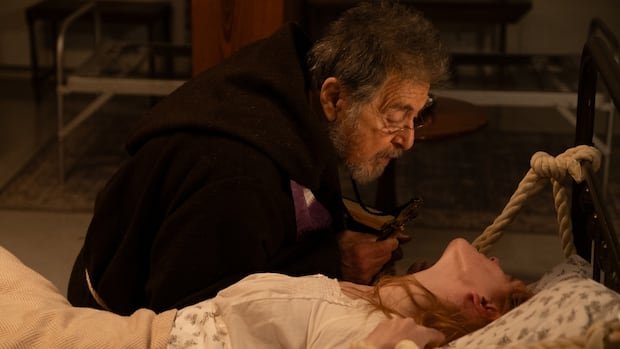In David Middel’s horror film “The Ritual,” there are two instances where title cards claim that it is the most well-documented case of demonic possession in history. The movie raises the question of whether the 1928 exorcism of Emma Schmidt was a medical or spiritual issue, leaving room for ongoing debate.
The film implies that those who oppose exorcism are portrayed negatively, suggesting that evil spirits persist due to skepticism from authorities. The story revolves around Joseph Steiger, a struggling parish priest in Earling, Iowa, who is tasked with overseeing an exorcism on Emma, who displays symptoms of mental illness.
Instead of exploring scientific approaches, the narrative focuses on the traditional method of exorcism led by Father Theophilus Riesinger. The film sends a distressing message about disregarding reason in the face of dire consequences, emphasizing blind faith over logic.
Despite its attempt to convey a religious theme, the film’s portrayal of exorcism as the only solution to Emma’s affliction is criticized for its lack of nuance and portrayal of violence against women throughout history. The central character, Steiger, is overshadowed by Riesinger’s extremist views, leading to a disturbing narrative that promotes dangerous and outdated practices.
The movie concludes with a scene that glorifies exorcism, dismissing any doubts or alternative explanations for Emma’s condition. This one-sided perspective on exorcism disregards the potential harm and fatal consequences associated with such practices.
In essence, “The Ritual” presents a skewed and harmful depiction of exorcism, promoting blind faith over reason and ignoring the risks and consequences of such extreme beliefs.


